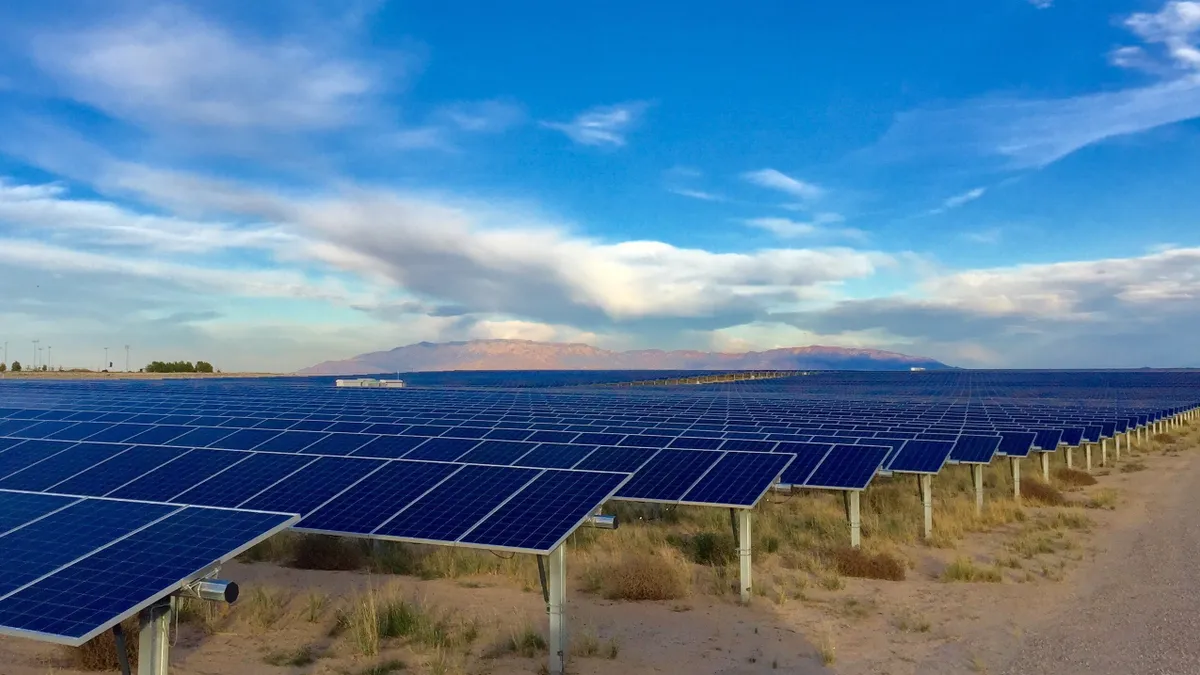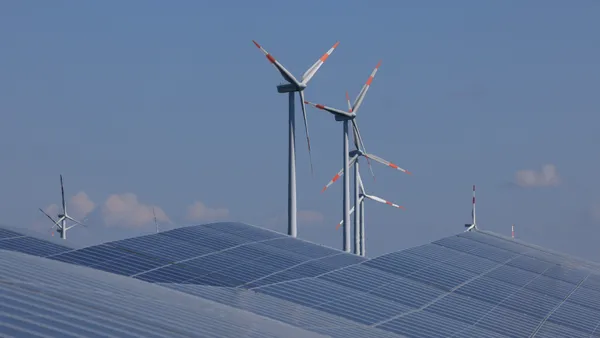Dive Brief:
-
The Interstate Renewable Energy Council (IREC) on Thursday released its annual scorecard grading states on their shared renewables programs, including community solar.
-
The scorecard ranks 17 programs that are actively implemented in 12 states and pending in two, based on four broad principles: expanding renewables access, tangible economic benefits for participants, flexibility and support of previously existing renewables programs.
-
The two highest scoring programs were in Minnesota and New York, which scored an "A" and "A-", respectively. California and Connecticut programs scored the lowest, with a "D" and "D-", respectively.
Dive Insight:
Falling renewable energy costs and rising demand for cheaper, more environmentally conscious energy consumption has driven the growth of programs that allow broader renewables access.
The scorecard aims to "help stakeholders think through program design," Mari Hernandez, IREC's Regulatory Manager told Utility Dive via email. "As more states add programs or reassess existing ones, the Scorecard highlights that there are replicable models that policymakers and stakeholders can draw from to set their state up for program success."
These programs generate energy at an electric provider's site and allow participants to get bill credit for that energy without having to install it in their home, which is either too expensive or not possible for the majority of Americans. Only about a quarter of residential buildings in the U.S. are able to install rooftop solar, according to a study by the National Renewable Energy Laboratory.
IREC's definition of shared renewables can include any number of renewable energy resources including wind, biomass, solar and hydro.
"If just five percent of U.S. households were to invest in a five-kilowatt (kW) interest in a shared solar system—the size of a typical residential rooftop solar installation — it would result in over 28 gigawatts (GW) of additional solar capacity, equivalent to the output of over 50 coal-burning power plants," according to IREC's description of this year's scorecards.
The council's broader principles are further broken down on the scorecard based on general program details, customers and subscriptions, generation systems, bill credits and renewable energy credits. Those categories are divided into 18 sub-criteria.
California runs two programs: Virtual Net Metering and Enhanced Community Renewables. While its Virtual Net Metering program, launched in 2011, scored a "B-," it's Enhanced Community Renewables program scored a "D."
"The main difference between the two CA programs is the bill credit rate," said Hernandez. "The VNM program offers a much better value proposition by providing the retail rate ... as compensation to subscribing customers for the generation associated with the solar. The bill credits for the ECR program are valued at the class average generation rate, which is much lower and less attractive to developers and subscribers."
The worst ranking program is Connecticut's Shared Clean Energy Facility program, which scored a "D-." The program, launched in 2015, meets only half the scorecard's criteria.
For a better score, the program "could focus on improving its Virtual Net Metering program to update and refine its rules to allow for greater market development and expand consumer access to renewable energy," said Hernandez.
Both Minnesota and New York "have made consumer access to clean energy an explicit goal within their broader energy policy objectives," Hernandez said.
Minnesota's Solar Rewards Community Program, launched in 2014, meets all the scorecard's criteria except two under siting requirements and system capacity limit: the program's capacity is at 1 MW and subscribers can only participate in programs in the county.
New York's program is strong in flexibility and transferability, but needs to flesh out its bill credit allowances more clearly and does not have set low- to moderate-income (LMI) outreach, according to IREC's scorecard.
LMI participation and expanding accessibility is a central piece to the ideology behind shared renewable resources. However, the scorecard notes, "[t]here are a number of challenges to facilitating low-income participation in renewable energy" and often encouraging that participation "requires creative thinking about program design."
Currently, the scorecards don't have a ranking for how many LMI customers participate in each program, and Hernandez said the data can be difficult to come by because not all programs publish that information. However, she notes, "other state and utility incentives outside of a community solar program ... can also play an important role in attracting residential customers and LMI customers."















